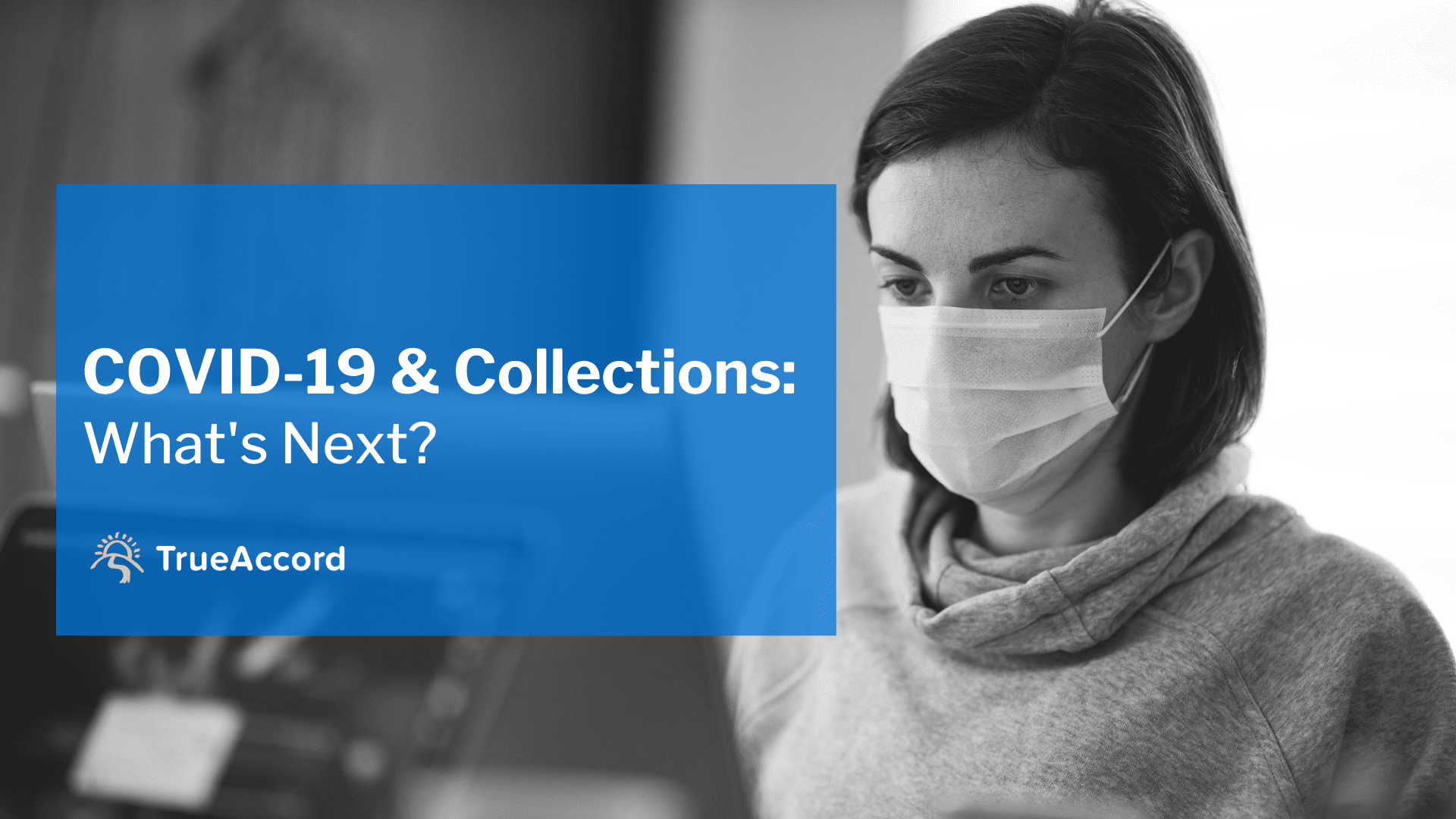
The COVID-19 crisis has ushered in an era of extreme uncertainty. As the country begins to slowly recover, the collections industry will face serious challenges. To help make sense of it all, we hosted a webinar with TrueAccord CEO Sheila Monroe and VP Customer Success Mega Rankin to discuss the impact COVID-19 has had on collections and what it means for the months ahead.
Read on to learn how COVID-19 impacted companies and consumers, how digital debt collection adapted, and what to prepare for in the coming months. You can also watch the full webinar here.
The COVID-19 Impact
The spread of COVID-19 ushered in a wave of unprecedented health and economic uncertainty that rapidly changed daily life across the country. These changes affected almost every aspect of daily life, including finances.
This uncertainty caused a disruption to tax season, typically a time when consumers pay off their debts at a higher rate than usual. As businesses across the country closed, there was a dropoff in consumer engagement with their debt (anything from opening an email, looking at plan options, calling into a call center, etc.), as well as payments.
However, the coronavirus-caused recession turned out to be different from every other recession we’ve experienced. While unemployment skyrocketed to record levels in April, individuals actually saw an increase in personal income on average due to stimulus checks and increased unemployment benefits. With stay at home orders in place, spending on things like travel, entertainment, and dining decreased, which led to a record high personal savings rate.
Many consumers took this opportunity to clear their financial slate. In addition to a higher level of engagement with debt, there was a substantial increase in lump sum payments in late April and early May.
Of course, the impact of the virus was not consistent across all consumers. For this reason, flexibility was key during this time. We saw many consumers modify their plans to fit their new financial situation in late March and early April. And those consumers who did create new payment arrangements opted for longer plans with lower payments. Consumer choice is always a crucial part of any debt collection communications, but all the more so during a time of unprecedented uncertainty. Luckily, 90% of webinar attendees allowed consumers to modify their plans in some way.
How digital-first debt collection adapted
As consumers shifted their behaviors to match a new reality, businesses were also facing some serious challenges. Specifically, companies needed to shift to a work-from-home environment. For most debt collection agencies, this was the very first time they considered having the majority (if not all) agents working from home. Many companies struggled to make that shift, especially around taking payments in a compliant manner. That means that at the same time as consumers actively wanted to pay off their debts, many of them were not able to reach an agent to do so.
As a digital-first debt collection agency, TrueAccord was able to rapidly adapt to best serve both our clients and consumers. Our cloud-based environment allowed us to seamlessly and safely shift our workforce to work-from-home, while our automated collections platform and self-serve payment portal, which allows us to carry agent workloads that are more than 50 times our competitors, ensured that consumers could self-serve payments, plan adjustments, and disputes while consumers who needed to talk to an agent were able to do so.
Additionally, as consumer behaviors shifted, our machine learning-driven outreach was able to adapt to these new patterns to ensure the best customer experience. And as always, our digital communications and self-service tools enabled consumers to engage with their debts when it was most convenient for them. This was especially crucial as consumers were also shifting to working from home, often with spouses and children in the same spaces. With packed schedules, the ability to explore payment options on their own time, even outside of FDCPA hours, was key.
What’s next?
While no one can be certain of what’s next, businesses must plan for multiple possible scenarios to best meet consumer needs. There are many factors to consider that will impact the future of the U.S. economy, including the unemployment rate, any possible additional government stimulus, vaccine development progress, individual states reopening and closing, schools reopening, and major employers going out of business.
While the exact timeline for recovery may not be known, according to a FiveThirtyEight survey, 73% of economists believe there will be a reverse radical recovery, meaning after a sharp decline, there will be a sharp partial rebound followed by a slow recovery. Similarly, the Fed is predicting that unemployment will remain in the double digits through at least the end of the year. Perhaps for this reason, the audience’s two biggest concerns for the next 12 months were lower liquidation rates due to high unemployment and pre-charge off delinquency rising.
That means that we can expect a few things to happen. It’s likely that there will be rising delinquencies through the end of the year, as a recent survey by the CFPB showed that 52% of households couldn’t cover expenses for more than two months after a loss of income. Additionally, as forbearance programs and hardship programs wind down, and government assistance becomes less regular, we can expect to see higher levels of charge off, and see generally lower levels of collectability while the economy slowly recovers.
To learn more about how these changes are affecting the industry, watch the full webinar.